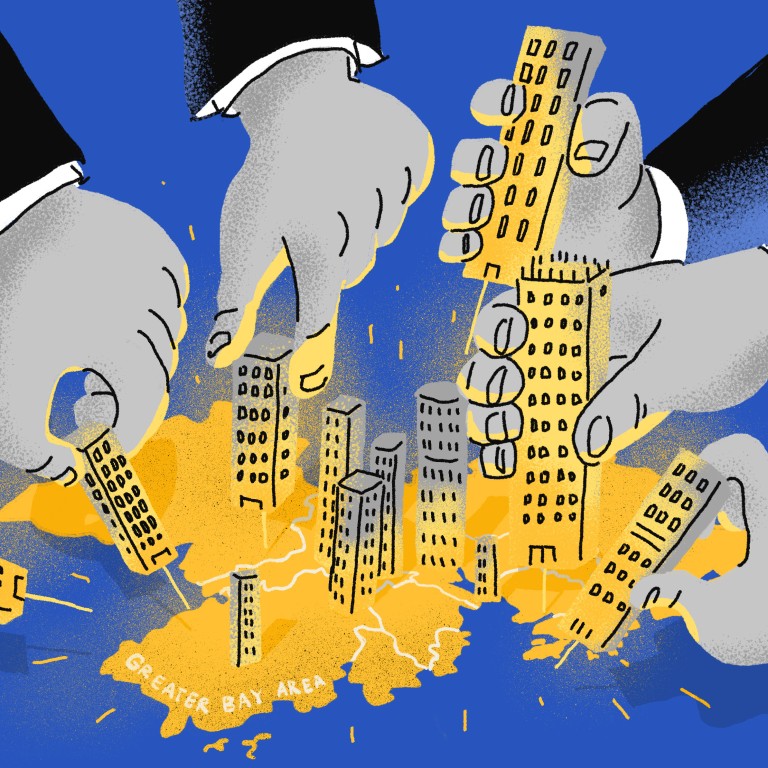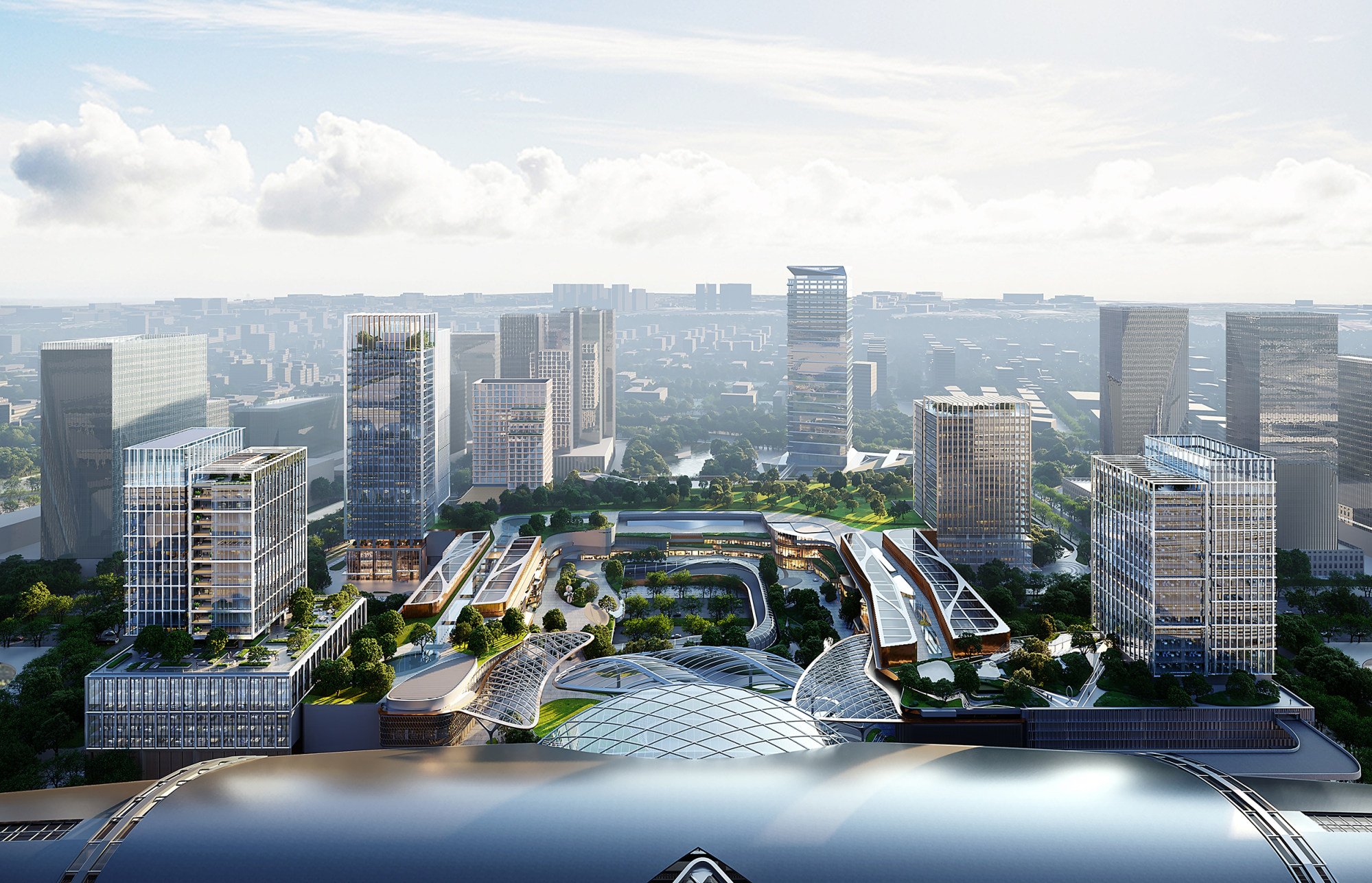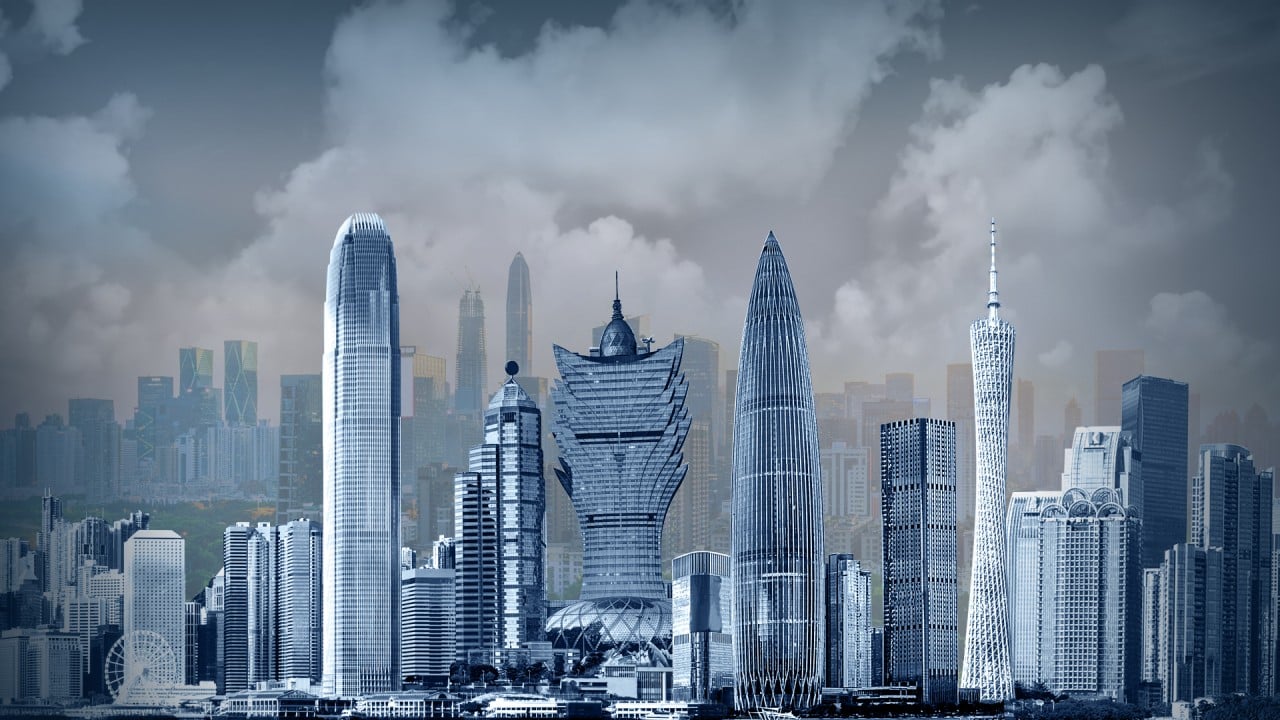
Greater Bay Area: will China’s property slump foil Hong Kong developers’ multibillion-dollar bets?
- SHKP, New World, CK Asset, Swire and Henderson have dozens of projects in the Greater Bay Area with a gross asset value of US$19.2 billion: CGS-CIMB Securities
- Hong Kong firms are well-placed to take advantage of opportunities given the crisis facing their mainland rivals, but the economic situation warrants caution, analysts say
“We are optimistic about the GBA. The region [accounts for] the company’s second-biggest investment in China after Shanghai,” Wong told the Post in an interview recently.
Wong said SHKP’s focus on a transport-oriented development (TOD) model places emphasis on making full use of mass transit facilities, providing easy access to major cities in the Greater Bay Area and maximising the potential for growth and investment.

It is exactly these kinds of initiatives that will encourage Hong Kong developers to expand their footprint in the region, analysts say.
It’s not just SHKP that is leveraging the potential of the Greater Bay Area. New World Development, CK Asset Holdings, Henderson Land Development and Swire Properties have projects in various stages of planning and construction that span the whole gamut of real estate – shopping centres, office towers, hotels and homes.
These five companies account for most of the investments in the region by Hong Kong developers. The gross asset value of their investments is about HK$150 billion (US$19.2 billion), according to estimates compiled by CGS-CIMB Securities.
Despite the current slowdown in China’s real estate market, these developers remain optimistic about the potential of the bay area and are using it as an opportunity to diversify away from Hong Kong, where the market has been struggling since late 2021.
The Greater Bay Area is expected to maintain its status as an important “growth engine” for New World Development, according to Echo Huang, the director and CEO of New World China Land, a subsidiary.
“We will continue to invest in tier-1 cities in the GBA and [maintain] our advantage in the area,” Huang said, adding that the average gross profit margin for New World’s projects in the bay area has reached 70 per cent and is likely to stay at that level for the foreseeable future.
SHKP has nine major projects with a gross floor area of about 3 million square metres (32.3 million sq ft) in the mainland’s bay area cities. While six of the developments are in Guangzhou, it is also undertaking residential projects in Zhongshan, Foshan and Dongguan. The total value of these projects is about HK$31.2 billion, according to estimates compiled by CGS-CIMB Securities.
“We remain very keen to expand our presence in the Greater Bay Area, building on our success stories in Hong Kong and Guangzhou,” Tim Blackburn, CEO of Swire Properties, told the Post in a written reply, adding that the company aims to double its real estate assets in terms of gross floor area in mainland China by 2032.
Swire set up an office in Shenzhen’s Futian district in 2019 with the aim of exploring development opportunities in China’s technology hub and other bay area cities, according to Blackburn. Swire is in discussions with Futian district to develop a commercial landmark, while a luxury hotel in the city’s Nanshan district is expected to open in 2025, he added.
Since the border with mainland China opened in January, some developers have seized the opportunity and offered discounts to lure Hongkongers to buy their mainland projects. SHKP said it recently sold all 20 units at its Guangzhou South TOD project offered to Hong Kong buyers.
There are several reasons for Hong Kong developers’ optimism about the Greater Bay Area market outlook. In 2022, the bay area’s nominal gross domestic product (GDP) crossed 13 trillion yuan (US$1.8 trillion), up from about 12.6 trillion yuan in 2021, according to official data.
With less than 0.6 per cent of the land mass of the country, the region produces 11 per cent of China’s GDP, which exceeds that of South Korea, Russia and Brazil. The bay area is home to 24 Fortune 500 companies and has incubated 63 unicorns – start-up companies valued at over US$1 billion – this year, making it one of the most dynamic regional economies globally.
Industry watchers note Hong Kong developers are also well-placed to seize the opportunities in the bay area given the liquidity crisis facing their mainland Chinese rivals.
Hong Kong developers have been constantly eyeing opportunities in China’s tier-1 cities over the past decade, but they were left with very few good options to buy land as their mainland peers were highly competitive and pounced on them, said Andy Lee, China CEO at Centaline Property Agency.
Amid the ongoing property slump and liquidity crunch, mainland Chinese developers have been forced to sell their assets and land, which may lead to fresh opportunities for the Hong Kong players, Lee said.
“It’s also a good time for [Hong Kong developers] to search for good opportunities as a lot of land has come onto the market,” said Alva To, vice-president and head of consulting for Greater China at Cushman & Wakefield.
But the builders have to proceed carefully, especially when there is oversupply and sluggish sales, he said, adding that tier-1 cities like Guangzhou and Shenzhen are mature and have reached saturation point.
“Some traditional property assets like residential homes will see a slow recovery,” he said.
When they want to “march in”, they need to have clear strategies and consider some alternative options, said To, citing opportunities in segments like logistics parks, particularly in Dongguan and Foshan.
The bay area’s logistics industry and the supply chain, including those specialising in more traditional trades and cross-border e-commerce enterprises, will benefit from the region’s export-oriented economy, JLL said in a report in January.
Hong Kong developers should proceed with caution, according to Raymond Cheng, managing director of CGS-CIMB Securities. The uncertainties posed by the economic downturn may continue to weigh on the market, and developers with high exposure to the mainland will face some challenges and risks, he warned.
Across China, house prices and new home sales have declined. China’s top 100 developers saw home sales plunge by 28.1 per cent year on year last month, according to data compiled by China Real Estate Information Corp.
Even Guangzhou, Zhongshan, Foshan, and Zhuhai, hotspots for Hong Kong developers to set up projects in the Greater Bay Area because of their proximity to the city, saw new home prices slump by between 3 and 6 per cent month on month in May, according to data compiled by Centaline.
“The growth driven by the mainlanders before has slowed,” said Centaline’s Lee.
“People want to save money. They are spending less on consumption and purchasing homes, which has impacted home sales in the area to some extent,” Lee said, adding it may also add pressure on commercial properties owned by Hong Kong developers on the mainland.
“Those [Hong Kong developers] with more exposure to the mainland may face more uncertainties,” he said. “So far, we cannot say the market has hit the bottom.”
Additional reporting by Julia Zhong




